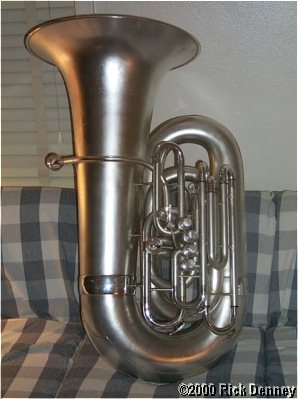Re: 90 degree turn in leadpipe
Posted: Wed Feb 25, 2009 12:47 pm
tuben wrote:I've noticed that the PT rotary tubas, (i.e. PT-6), that are labeled as 'York-style' have a leadpipe that makes a 90 degree turn into the valve block. The 'open' tuba actually goes though a turn in the fifth valve.....
Thoughts? Comments? Really 'York style'?
RC

In this photo, the leadpipe appears to drop straight into the first valve.

The Holton 345 is a "copy" of the York, and the leadpipe goes straight into the first valve.

The bloke who did this conversion described how he shaped the leadpipe to be more like the York. It seems to make a turn into the first valve.

In the Nirschl copy of the York, the leadpipe goes straight into the first valve.

But the leadpipe seems to make the right turn into the first valve on the Yamaha 826 Yamayork. Is that really the case?

The leadpipe goes straight in on the Yorkbrunner.

On this 4/4 York (of similar vintage, but with a clearly different valveset), the leadpipe goes straight in.
The 1920's York front-action Monster BBb Bass had a leadpipe that went straight in.
My suspicion is that ultimately it doesn't matter. I also suspect that any front-action tuba with a vertical valve arrangement, an up-only first valve loop, and third and fourth valve branches that sweep up on the outboard side of the valves is probably called "york-style".
Rick "noting no consistency for fifth valves on 'york-style' tubas" Denney